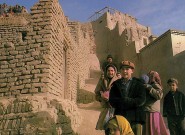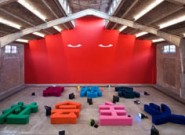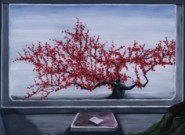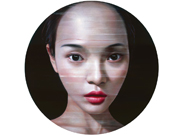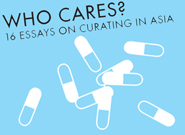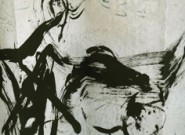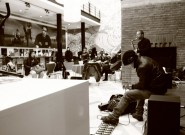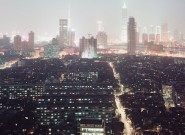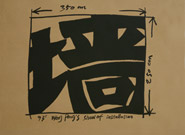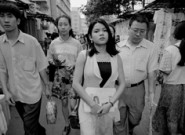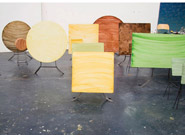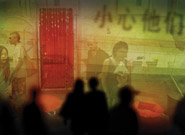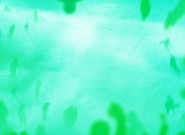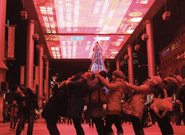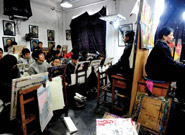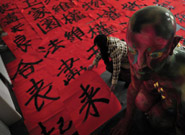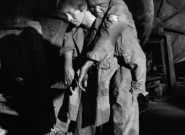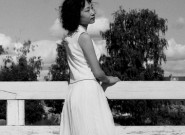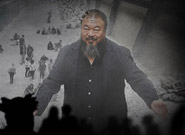Beginning on October 19, 1981, a four-day conference for the sixth Aga Khan Award for Architecture was held in Beijing. The topic of discussion was “The Changing Rural Habitat,” which remains a meaningful and relevant topic to this day. The conference was divided into two components. The first presented case studies: “Rural Architecture in the…
Read MoreStarting with its title, Bulgarian artist Nedko Solakov’s recent outing at Continua bespoke a dubious ambivalence toward a bygone system. Spread across the entire two-floor space, Solakov’s noncommittal stance is effectively revealed in the wide range of media presented— video, painting, graffiti, and writing—through which the artist filters his convoluted if honest ideas about art…
Read MoreZhang Xiaogang and Mao Xuhui have been close friends since they were first acquainted in Yunnan in the late 1970s. Early on, their artistic practices and trajectories in life overlapped considerably. Around the time of the ’85 New Wave, the “New Figurative Art” exhibition was born, and later the “Southwest Art Group.” Even after Zhang’s…
Read MoreI hire models for nearly all my paintings, but sometimes I also find subjects through friends or acquaintances. A few days ago I was at a Prada party, and I saw a very pretty woman, so I took her photo. I collect these materials, but I don’t use everything. Some remain just as ideas. When…
Read MoreWe find in Hong Kong something of a curatorial anxiety: there are very few makers of exhibitions active in the local art scene, and, though this is entirely in keeping with the small scale and number of available exhibition spaces, intimate connections between institutional academic research and critical writing in the territory lead to a…
Read MoreAs curator of one of the world’s premier collections of classical Chinese art outside of China, Hao Sheng’s responsibility is to explain a visual culture that, more often than not, alienates its viewers. Sheng recently invited ten artists to make contemporary responses to works from the permanent collection of the Museum of Fine Arts Boston….
Read MoreAfter a decade producing experimental music through his label Subjam, sound artist Yan Jun spent 2010 organizing a monthly performance series at UCCA in 798. When I met with him a few days before the final event in the series, he spoke with a mix of disappointment and mischievous anticipation. Over the course of the…
Read MoreIn the final hours of 2010, en route from Philadelphia to Shanghai, I received a company e-mail from our chairman promulgating a change of slogan for Modern Media’s flagship publication, Modern Weekly. Ten years on, no longer would it offer the promise of “Read Modern Weekly, Keep Up With the World.” Instead, by changing one…
Read MoreOn November 20, 1993, Wang Peng held a solo exhibition at the short-lived Contemporary Art Gallery at 123 Longfusi Street in Beijing. The name of the show was “93: Wang Peng’s Installation Exhibition,” but there was only one work, entitled “Wall.” At the time, Wang was still a professor at the Central Academy of Fine…
Read MoreAs with most large-scale periodic exhibitions, in Lianzhou we find two festivals—the official show that unfolds in more formally curated gallery spaces, and a parallel program happening beyond that, including a range of events taking place in the small town itself. The latter “festival” can easily escape the public eye—a dead zone full of heretofore…
Read More“I ask it be extinguished / This crude iron light / The light of lovers / The light of the sun.” Such goes the first line of the poet Hai Zi’s work I Ask: Rain. According to Liang Yuanwei, this “crude iron light” leaves a biting sensation in her mouth. Sometimes words and fleeting images…
Read MoreThis past year has seen the consolidation of a number of strategies for adapting to the at times paradoxical but always parallel challenges of survival and production, many of which would be unrecognizable or even barred from the institutionalized cosmopolitan alternative systems by which they are often inspired. Take MadeIn Space, a reincarnation of Shanghai’s…
Read MoreA YEAR OF INTERVENTIONS As New Yorker correspondent Evan Osnos recently wrote, struggles over demolition have become “the national psychodrama, the defining battle over power and fairness.” Today, questions of land come to the fore in urban development plans, government revenues, and in the inclusion of real estate in GDP figures. Sun Dongdong weighs…
Read MoreIn 2010, the influence of microblogging on the Chinese art world was, in fact, quite micro, but it has at least become part of the conversation. If used properly, Weibo (literally “microblog,” a Twitter-style service from Chinese web portal Sina) is a tool with the capacity to transform artistic production. For galleries, microblogging has become…
Read MoreIn recent years, criticism of Chinese universities from scholars in a variety of fields has grown. The main focus of this criticism is the distribution of power in university administrations. Although Chinese art schools are distinct from other universities in many ways, this tide of criticism has exposed a variety of unsavory practices at art…
Read MoreIn late 2009 and early 2010, the hot topic in Beijing art circles was the relocation of the arts districts and the attendant legal complexities. With the rise of real estate speculation and a new round of construction planning for the city’s Chaoyang district in the first half of 2009, most of the town and…
Read MoreChen Chieh-Jen’s works Empire’s Borders I (2008-09) and Empire’s Borders II (2010) use images to address the modern critical construct that is “empire.” Modern leftist thinkers’ sustained consideration of “empire” seeks to excavate its internal contradictions. And just as Slovenian intellectual Slavoj Žižek posits, the true problems of empire lie with the world police: the…
Read MoreHow to begin? It feels like it was just earlier this evening that the artist Chen Xiaoyun called out of the blue. The preamble you’ve always dreaded, for a moment you’re at a loss. A rush of adrenalin…
Read MoreMassimo Torrigiani is not just another fair director. Before taking the position late last year, he launched the photographic quarterly Fantom, the latest in a long string of cultural entrepreneurial ventures. We caught up with him for Japanese barbeque in Beijing to talk about his plans for the fair and his read on an art…
Read MoreI ran into him the other day at the Element Fresh near the Lido Holiday Inn hotel in northeastern Beijing, not the sort of place you’d necessarily expect to find the first true superstar of Chinese art. But if that’s where Uli Sigg, the man at least indirectly responsible for a good part of that…
Read More
